Bush-Holley House
“I have a dream that one day on the red hills of Georgia the sons of former slaves and the sons of former slave-owners will be able to sit down together at a table of brotherhood.” –Dr. Martin Luther King, Jr.
The Bush-Holley Historic Site in Greenwich, Connecticut was not the first northern stay for the Slave Dwelling Project, Cliveden in Philadelphia, Pennsylvania holds that distinction. This was not the first time that I stayed in a dwelling in an urban setting, for I did that in Montgomery, Alabama; Philadelphia, Pennsylvania; Lexington, Missouri; Wilmington, North Carolina, Anderson, South Carolina and Charleston, South Carolina. This was not the first time that I shared the experience with a Caucasian, for I have done that in Texas, Missouri, Louisiana, Maryland and South Carolina.

It might be the case that some of the Caucasians on some of those prior stays were the descendents of former slave owners, information for whatever reason they chose not to reveal and I chose not to ask. The stay at the Bush-Holley house was the first time that I knowingly shared the slave dwelling experience with the Caucasian descendants of slave owners and get this, one guest was the descendant of a slave and slave owner.
I can recall that when I became a Civil War reenactor 20 years ago, some Confederate reenactors would be quick to voluntarily reveal to me that their ancestors did not own slaves as if to justify to me and themselves that the Civil War was not about slavery. I have read and have a signed copy of the book titled Slaves in the Family by Edward Ball. None of that really resonated with me until I recently got involved with the group Coming to the Table.
The Coming to the Table story is about connecting people and the past to the present and future in a way that is relevant for our nation. Housed at Eastern Mennonite University’s Center for Justice and Peacebuilding, CTTT was launched when people whose ancestors were connected through an enslaved/enslaver relationship realized they had a shared story that remained untold. Today, they and many others believe that the legacies and aftermath of slavery impact our nation in seen and unseen ways and they are committed to writing and telling a new story about our nation’s past and the promise of our collective future.

It was through this group that I was introduced to Grant Hayter-Menzies, Reverend David Pettee and Dionne Ford. They would all share the Slave Dwelling Project experience with me on the night of Friday, March 30, 2012. I met David and Dionne three weeks prior in Richmond, VA at the national conference of Coming to the Table. Grant, who was instrumental in making the stay happen, I only knew through telephone conversations, Facebook and emails.
According to its brochure, “the circa-1730 Bush Holley-House, a National Historic Landmark, is the centerpiece of the Greenwich Historical Society’s site on Cos Cob Harbor. Bush-Holley House is significant on multiple levels and has been preserved to feature many of the architectural elements added in the nineteenth and twentieth centuries. Today, the landscape and gardens of the historic buildings are restored to circa 1900, a visual statement that allows visitors to recognize many artworks created on site. Once you enter the house, you’ll find that your tour offers a glimpse into two distinct eras that tell a story of dramatic change over time.” In my opinion, this brochure nor the information that I came across on the website does not do the site justice for all that it is successfully doing to interpret its slave holding past.

Prior to the stay, staff at the Bush-Holley House arranged for a panel discussion on the subject of slavery in the north. In addition to the three people who would join me in the sleepover, the following people were also included on the panel; Dr. Allegra diBonaventura, Assistant Dean of the Graduate School of Arts and Sciences, Yale University; and Dale Plummer, City Historian of Norwich and Chair of the Emancipation Proclamation Commemoration Committee. The discussion was given to a standing room only crowd with lots of questions asked afterwards. It was exciting to see a diverse audience there especially because I knew most of the African Americans who attended. My uncle was there who I had not seen in 21 years, he was accompanied by his daughter who, by my recollection, I was meeting for the first time. This mini family reunion was reminiscent of the first northern stop for the Slave Dwelling Project at Cliveden in Philadelphia, PA in 2011. There two aunts and my first cousin all of whom I had not seen for 20 years met me at Cliveden.
Trying to interact with all the people wanting attention after the panel discussion was a challenge but a good problem to have. I eventually ended up in the space where we were to spend the night. It was there that the reporters wanted their interviews.

Maneuvering in the space was a challenge. It was a space that was set up to be seen from an observation area. Allowing us to sleep there was the site’s curator worst nightmare and rightfully so. The space was filled with artifacts and replicas and materials that depicted a space lived in by enslaved people, therefore only Grant and I could sleep in that space. Allowing too many people in to that space could compromise its structural integrity, therefore David and Dionne had to share the space in the observation area. Luckily, we were only separated by 3 feet high plexiglass.
Of my 30 prior stays, this space could be compared to the Russell/Reinhard house and Winsor/Aull Greek Revival mansion both in Lexington, Missouri. The space which was originally separated from the house was eventually attached similar to the slave dwelling at Cliveden in Philadelphia, PA.
Once the reporters left, we all went outside to perform a libation ceremony to the ancestors. Interesting because although we were only four people, the place, our backgrounds, and our reasons for being there made for some heartwarming and tear jerking requests.
Once back inside the space, the publishers of my blog for the second consecutive time, made arrangements for me to communicate live with an audience through Facebook. The questions came fast and furious and I kept up as much as my blackberry would allow all the time being thankful that this project was compelling enough for people to want to engage in a live chat. It also proved that I must improve my capacity to communicate if I want to continue to offer an audience an opportunity to engage in live chats. What I took from that experiment is that the questions asked forced me to think more about the space and the people who occupied it, and for those who participated, I say thank you for reminding me that this project is not about Joseph McGill but about the enslaved people who occupied their assigned space in the Bush-Holley House and other places like it.
After the live chat, I engaged in conversation with Dionne, Grant and David. We talked about how the house was threatened with demolition when I-95 was proposed. With our collective knowledge of how interstates were planned, we concluded this area had to be an African American neighborhood. We talked about the challenges of ten enslaved people sharing a 25 by 20 feet space that also coupled as storage space. We talked about the pushy reporter who tried to provoke us into saying things we might regret once we calmed down. We talked about how the group Coming to the Table brought us all together for this occasion. We talked about genealogical research and my disdain for same and how I am thankful for people like the three of them who have the patience for research. We talked about the three of them being prolific writers and how I will be calling on them for inspiration for the writing I will eventually do for the Slave Dwelling Project. We talked about being the descendant of a slave owner and a slave as is the case of Dionne. And then there was sleep.
By 6:30 am everyone was awake. I was happy to learn that no one accused me of talking in my sleep, snoring yes, but not talking in my sleep. The libation ceremony, the pushy reporter, the live chat, sharing the space with descendants of slave owners, all had the potential of providing ingredients for an interesting sleep conversation. The group conversation did continue from the previous night when I blatantly asked David and Grant the question: “Do you feel like outcasts for revealing the history of the slave owning by your ancestors?” By the answer they both gave, it is apparent that both of these men have drawn a line in the sand and will not retreat despite what ridicule that might come their way. I guess that became clear to me when I was in Richmond three weeks ago with the group Coming to the Table because there were more people there like Grant and David. We all left the space as we came in, with a reporter coming to gather our thoughts about our overnight stay at the Bush-Holley House.
Reflections: Dionne Ford

When I was invited to join Joe McGill in his slave dwelling project, I leapt (or slept) at the opportunity. Over the past two years, I’ve admired Joe’s efforts to bring slave dwellings and their need to be preserved to the attention of the public by sleeping in any slave dwelling that will have him. So when his project brought him North, to the Bush-Holly House in Greenwich, CT I was honored and thrilled to make the hour drive to join him, Grant Hayter Menzes, and Dave Pettee in an overnight stay.
At first, I was struck by the size of the dwelling. It was larger than I’d expected. In my research in to my family’s history, I’d encountered one other slave dwelling in Virginia, half the width of the attic. But that cabin was a higher, stand-alone structure, only a stone’s throw away from the big plantation house, but still it provided some measure of autonomy, a place where its inhabitants could speak freely and just be. Not so in the Bush-Holly House. Located in the historic home built by wealthy Dutch farmer Justus Bush, the slave quarter doubled as a storage space and food preparation area. Among the blankets and pillows are baskets of (fake) vegetables and herbs hang from the exposed wooden beams to give a feel of how it would have been in the late 1700s. Once the reporters and staff members of the Historical Society left and it was just the four of us, we all instinctively spoke in hushed tones, as if to not let other people overhear. That’s what it would have been like for the enslaved people there – a dwelling, but not much of a sanctuary. What must it have been like to have your only shelter be in the same house with your masters? When could the enslaved people there ever speak freely?
I am descended from both a slave and a slaveholder, but when I went searching for my family’s roots, I was really only interested in my enslaved ancestors’ story. I didn’t want to know about the people who had enslaved them even though their blood courses through me. Because slaves were property, the details of their lives exist almost entirely in the documents of the people who owned them like the will where my great, great-grandmother was bequeathed along with cattle and farm equipment. It quickly became apparent that I could not learn anything about my enslaved ancestors without learning about the people who enslaved them. It stands to reason that the opposite is true. If we want to fully understand how the historic towns that we now call home were established, we have to look at the lives of all the people who had a hand in planting those roots from those whose names live on in town halls to their slaves whose names are largely forgotten, but whose sweat and blood tilled the soil. The Greenwich Historical Society understands this. Coming across that slave cabin in Virginia was like finding a spring in the dessert, so rare was it for me to encounter an existing monument to the life of enslaved people, my people, who have mostly been eradicated from our minds and thoughts, which in turn eradicates me, makes me feel invisible. Having the chance to sleep in the Bush-Holley slave quarters was the equivalent of diving in to that spring, quenching my thirst to know more about slavery and how it informed the foundation of our country. These slave dwellings are sacred places and an opportunity to encounter them is a pilgrimage.
Before I went to sleep, I used my phone to send a good night email to my family and noticed a message from one of my genealogy buddies whose ancestors are from the same town as mine, Ocean Springs, Mississippi. Our enslaved ancestors are buried in the same Mississippi cemetery and we think we may even be distant cousins. She asked that I please touch the wall of the Bush-Holley cabin and whisper her ancestor’s name. I said, “Johanna” into the still Connecticut air, “Tempe” and “Eliza,” my own enslaved ancestors, “59” the number of souls my great, great-grandfather enslaved before selling them and “Candace” who had inhabited that attic.
Silent in the attic, completely in the dark, I could hear rain on the roof as I closed my eyes to go to sleep. I rested well, a feat for me, because it usually takes me a long time to still my mind enough to go to sleep. Maybe it’s because I knew that by being there with my friends in preservation solidarity, the lives of the slaves in that attic would no longer be silent or completely in the dark.
Grant Hayter-Menzes

I’ve been fascinated by Joe McGill’s Slave Dwelling Project since first talking to him on a Coming To The Table conference call last year. The timing was fortuitous. Shortly before this call, I had uncovered information which, in my ignorance, I first could hardly believe: that, just like my Deep South ancestors, who had enslaved black people from the first years of the nineteenth century until Emancipation, my New England ancestors of a century earlier had also been enslavers. One unique case, that of Guy Drock of Norwich, slave of my ancestor Captain Benajah Bushnell, who was sold in 1752 by Bushnell to the white woman who wanted to marry Drock, was only uncovered through years of research not only by Drock descendants but by the diligence and personal passion of Norwich historian Dale Plummer. (Please see this link to my March 29th meeting with Plummer and the Drock descendants: http://www.norwichbulletin.com/news/x586038473/Descendants-of-Norwich-slave-owner-meet).
Through this line of enquiry, I read that the Greenwich Historical Society owns and operates the 1730 Bush-Holley House, one of the few houses in New England with extant slave quarters. It is also one of the few which candidly interprets the lives of Connecticut slaves from the eighteenth to the nineteenth centuries. That slavery is an issue many Southerners would rather not talk about made some strange sense to me; I know from experience that compartmentalization is a fact of life in Southern families. But the people of New England, that crucible of the Abolitionist movement?
Could they face this part of their past? I was to discover that, no, not all are able to do so. And so I took the first of two big risks. I told Joe during our conference call that I would contact the Greenwich Historical Society and ask them if he might bring the Slave Dwelling Project to the attic room over the Bush-Holley House kitchen. I didn’t have to wait long for an answer. To my surprise and delight, GHS President Debra Mecky was all for it, and a panel discussion was suggested for the evening of Joe’s stay in the quarters. I was asked to be one of the panelists and to suggest who else might be a good fit.
I did this. Then I decided to take my next risky step. I asked Joe if he would be interested in having me join him in the attic. I had no reason to suppose he would be happy about the idea. Joe has had people share the Slave Dwelling Project experience before—black people and white people—but had never knowingly shared it with a descendant of enslavers.
Was that something he wanted to do? Would he wonder why I wanted to do it—whether I was swamped with “white guilt”, eager to do my penance on the hard floor of the quarters, to put myself in the place of those of whom my ancestors required labor, and sometimes love, beyond price and never once paid for? I know I didn’t want him to think that, because while I am ashamed of what my ancestors did, like my Southern grandmother, who was as passionate about the subject of equality as my mother, my siblings and I am, I realize that I am not here to expiate sins that I could not possibly hope to wipe away or make better.
I thought of one of the most heartfelt and articulate of the fugitive slave narratives published by Bostonian Benjamin Drew in 1856. How could my forebears, I said to myself, echoing John Little, “who know they are abusing others all day, lie down and sleep quietly at night…when they know that men feel revengeful, and might burn their property, or even kill them?” What John Little was asking was what I ask, every time I look at the names of Juba and Rose, Ginette and Warren, India and Satin: how in the name of God did my ancestors have the conscience to sleep at night, enjoy their silver sugar tongs and their embroidered chairs and the leisure free labor brought them like the flip of a light switch, while these unpaid laborers lived and worked alongside them every day, often in the kind of substandard housing that is falling apart now?
To see a little house where an enslaved person or family lived, while working from light to dark, knowing that those four walls were all that consisted of privacy for them (though not always safety) in the brief interval of night, when they could be whipped for wandering outside their dwelling after curfew, and realize that these cabins were the powerful human engines that made possible the big houses where their masters seem to have been able to sleep at night, and to see them in decay because the master’s house is prettier or draws more tourist dollars, and nobody wants to be reminded of what they stand for, seems to me to signify a second enslavement, a multiple crime against the dignity of the people who were born, lived, married, worked and died there. And a crime against their amazing strength of character and will. It is this that makes slave dwellings beautiful to me. I didn’t want to enter such a place wearing sackcloth and ashes, apologies on my lips. I wanted to enter and acknowledge the hearts and souls and dreams of people who despite centuries of enslavement, still knew the beauty of being free. I wanted to honor them, remember them.
I didn’t have to worry quite so much. Joe replied to my request by warmly welcoming me to share the experience. And we were in turn joined by Rev. David Pettee, descendant of dozens of New England enslavers (one of whom we share in common in the Leffingwell family of Norwich), and Dionne Ford Kurtti, a descendant of people enslaved and of those who enslaved them.
I inherited from my mother and grandmother a compassion that has in it no small amount of anger—anger at the abuse of the helpless and the powerless, which in my grandmother burned bright for the victims of the Great Depression (of which she had had painful personal experience), for the farm workers of California’s Central Valley who rallied around Cesar Chavez, and always for black people she had seen mistreated in her Southern girlhood and long after she left the South for the west. She had a calm way of outrage; mine is a storm from which I can rarely collect much that is coherent. During the panel discussion Friday night, my emotions flooded me, and I wondered what would happen when Joe, Dionne, Dave and I ascended to the room over the kitchen, unrolled our sleeping bags and lay down in that spare, chilly, creaking space, the shingles just overhead rattling under rain showers all night.
For the first half hour, lying there in the dark on ungiving boards, I had a period of panic. For a split second, I who have never been a slave understood something of what life in that space had been like for slaves—the lack of privacy from the master and mistress, the sense of being controlled, unable to change one’s situation, to endure heat up there in the summer and cold in the winter (or spring, as was the case with us) without a murmur, to work every day knowing that if you stopped, the repercussions could involve not a warning letter from a supervisor but degrading threats to your dignity or personal safety.
Despite my three friends in the room with me, I felt extraordinarily alone. That’s when I thought back to an hour earlier, when we four had stood beneath a budding tree in the garden just outside the kitchen wing. In the damp darkness we took each other’s hands and poured libation to honor the people who had lived, worked and died here and in all the slave quarters up and down the eastern seaboard and across the South, those abandoned and gone and those still, by some miracle, standing, waiting for Joe.
I had brought with me into the quarters some special things: a letter written by my great-great-grandmother, the daughter of a Southerner who crossed over to fight for the North, and a letter from my grandmother, through which her voice emerged especially clear. And I had intended to speak to the memory of Candice Bush, the last slave emancipated in Greenwich, whose home we would be dwelling in that night. Instead, what came to me was the memory of a slave named Rose Jackson. According to her tombstone in Old Saybrook’s Cypress Cemetery, which I visited the day before, Rose was born in 1778 and died in 1866. She had served five generations of children of the family of General William Hart, whose tidy white house still stands down the street from the cemetery. “Faithful Ever in All Things” was engraved on her marble headstone. The love that this black woman shared with her white family seemed not to have died with her but to radiate from the marble, as if it had stood a long time in the summer sun. I saw that Rose was my grandmother, your grandmother, the grandmother of us all, and the good she did is still going on, like the tides at Saybrook and the sweet incense of age and intimacy that pervades the Bush-Holley House quarters. I spoke to her and my respect for her under the flowering tree, and said “ashe” with the others. And as I went to sleep later, I said “ashe” to my white grandmother, too. These two knew that the greatest of all things is love. And this is what, for me, took a cold, dark room and made it and places like it sacred, and me a better person for the privilege of sleeping and dreaming there.
Reverend David Pettee

Here in the North, we have inherited a powerful historical amnesia when it comes to the memory of slavery. But don’t worry. We haven’t forgotten our history. We still worship the stories of the Sons of Liberty. We still teach “The Midnight Ride of Paul Revere” to our school kids. “Listen my children and you shall hear…” Every third Monday in April is Patriot’s Day, when we commemorate again that first shot fired on Lexington Green that was heard ‘round the world.
I live In Massachusetts. Our license plates remind us that we are the ‘Spirit of America.’ We are the good guys.
In 1754, the Crown requested that every city and town in Massachusetts report the number of slaves over the age of sixteen. 114 communities responded to the census. 109 recorded at least one slave. The town fathers of Boston dutifully recorded 989 slaves, representing nearly 9% of the population.
989 slaves? In Boston? How come I had to discover this fact by accident?
Within walking distance of where I work in downtown Boston, there are numerous buildings and sites that pay homage to Boston’s storied colonial past. Every day on my way to work, I pass the Robert Gould Shaw 54th Regiment Memorial on Beacon St. Directly across the street from the memorial is the Massachusetts State House, built on property once owned by John Hancock. We all know John Hancock. Or do we? The plaque that mentions where his house once stood conveniently neglects to mention that Hancock was also a slaveholder.
Today, Bay Staters are very proud of our abolitionist past. We forget that in 1835, William Lloyd Garrison, editor of The Liberator, was nearly murdered by an angry mob on the streets of Boston. In the 1960’s, in the name of urban renewal, the office where the newspaper was published fell unceremoniously to the wrecking ball.
At the base of Beacon Hill in the Boston Public Gardens stands a statue of Charles Sumner, widely considered the most radical abolitionist in the United State Senate before the Civil War. In 1856, after Sumner was nearly caned to death in the Senate chambers by South Carolina Representative Preston Brooks, hundreds of people sent money to Brooks so he could buy a new cane. It is quite understandable that many Massachusetts citizens were outraged! Few, however, questioned Sumner’s outlandish claim made two years before, when he thundered on the Senate floor that, “No person was ever born a slave on the soil of Massachusetts.”
I can still vividly remember the first time I recovered the forgotten story of slavery in my own family. In 2006, I innocently upgraded my Ancestry.com subscription and was stunned to find the 1774 Rhode Island census that indicated that my ancestor Edward Simmons owned four slaves in Newport, RI. I drove to Newport the following day to get to the bottom what was obviously some mistake. It wasn’t.
Instead, I found eleven more Newport ancestors who enslaved Africans. Fast forward to 2012, I have since discovered thirty additional slaveholding ancestors and one ancestor who was a captain of at least five voyages in the transatlantic slave trade. Get this— all these people lived only in New England.
So much for slavery as a Southern institution…
I first heard about the work of Joe McGill last year when I was in South Carolina co-representing Coming to the Table at the annual meeting of the National Genealogical Society. I was struck by Joe’s vision of wanting to preserve the few existing slave quarters that are still standing in this country. Lifting up the history of any building forces us to reckon with the meaning of this structure. It is so easy to forget that slavery helped build the North because it is so hard to see that legacy any more.
When the invitation came to spend a night in the slave quarters at the Bush-Holley House in Greenwich, CT with Joe, Grant Hayter-Menzies and Dionne Ford, I jumped at the prospect. I wanted to try to better understand what enslaved people must have experienced every night. I wanted to honor those who were forced to live here.
Even with a Thermarest pad under my sleeping bag, the floor felt so hard and was unforgiving. While the attic offered some privacy, it was easy to hear noises from the floor below, and the creaking, as people walked up and down the stairs. The people who lived in that attic through bitterly cold winters and oppressively hot summers must have spoken in a whisper, hoping to maintain as much dignity as they could—dignity that was constantly undermined by people just like my ancestors.
As I lay awake, I thought about Joe and Dionne, asleep on either side of me, and wondered what this experience must be like for them, sharing this space with two descendants of slaveholders. The rain that pitter-pattered on the roof was a timeless noise that helped me finally fall asleep. Startled by snoring, I awoke quite suddenly at 4am, all twisted in my sleeping bag, feeling hot, clammy and disoriented. Back in 1750, the people who lived in that attic were probably already in the kitchen baking bread by 4am, preparing breakfast for their masters.
Despite the enjoyable company, it was most certainly not a restful night.
— Rev. David Pettee
About the Slave Dwelling Project
<

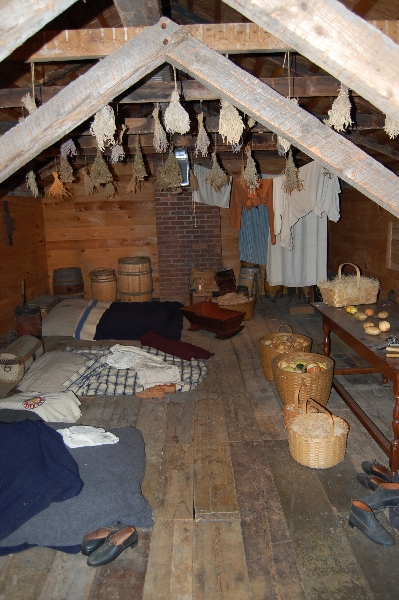

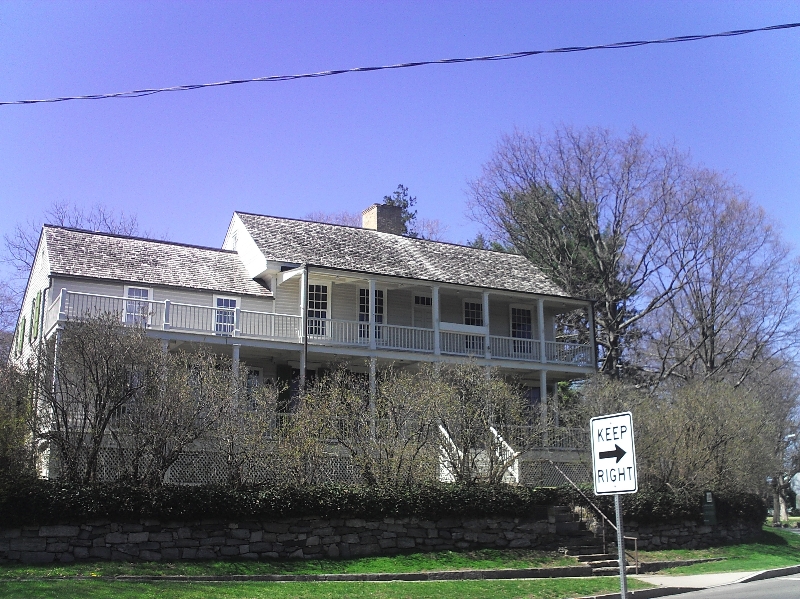
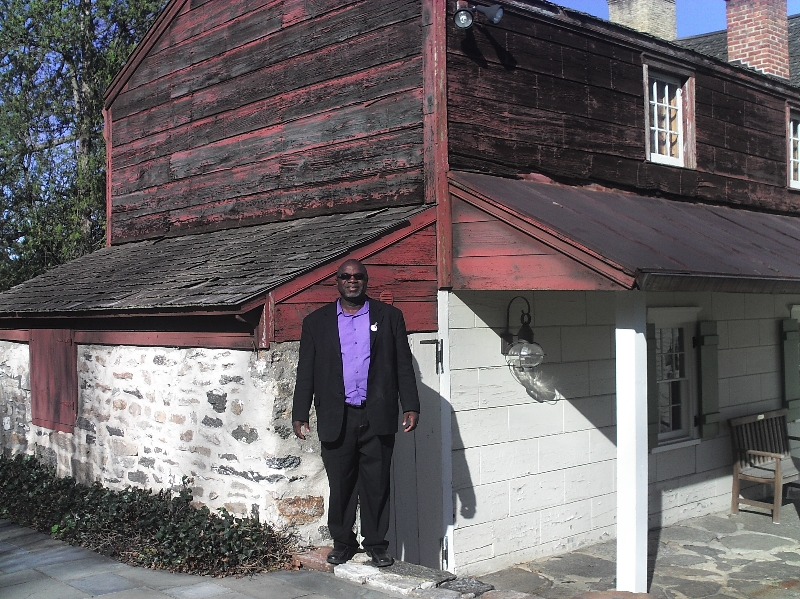
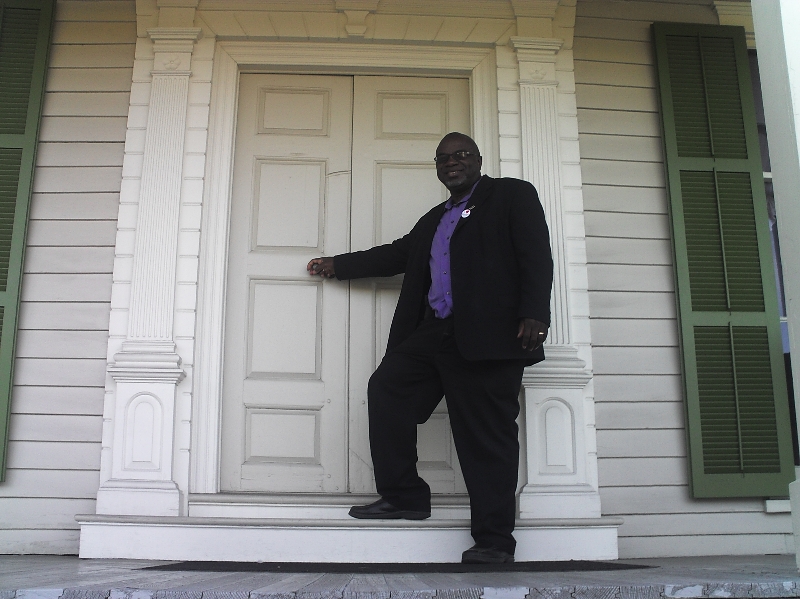

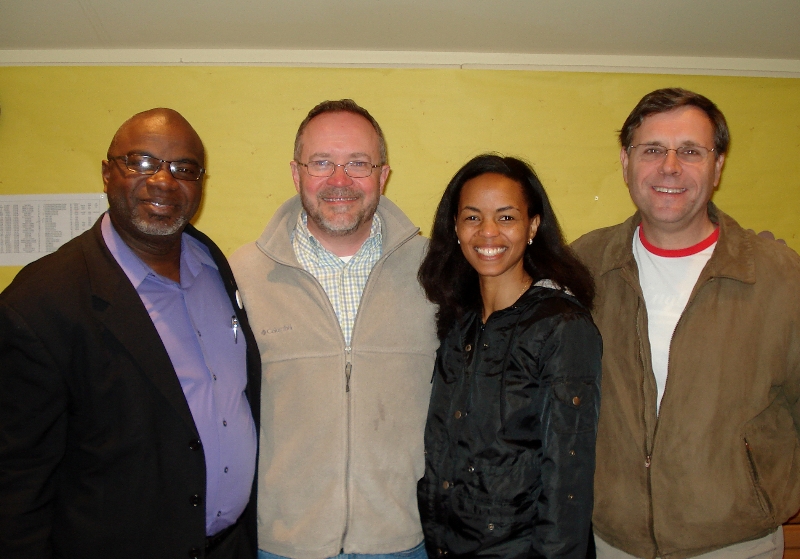

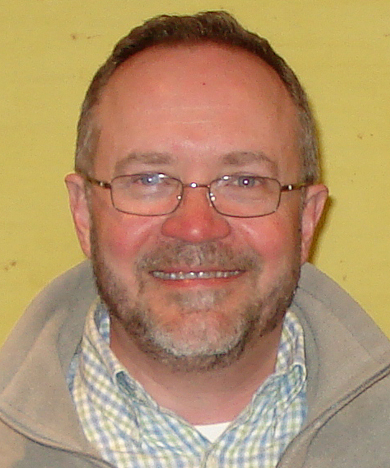








I am an Archaeologist and a college professor, I did field work at Monticello Va. I am also an African American. Thanks for this excellent article. I have had similar feelings excavating at the Jefferson plantation.